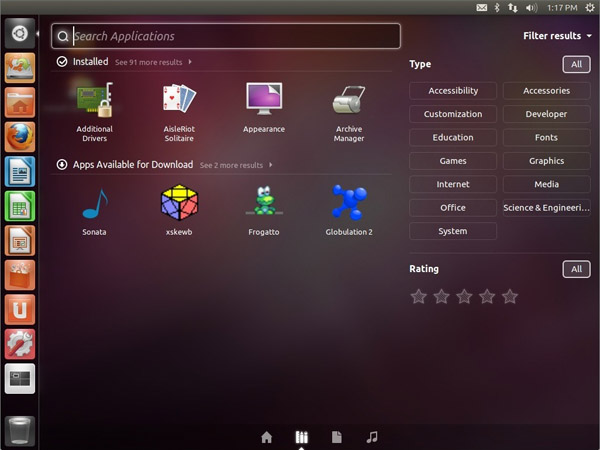If you already have a working linux system, installing without external media is easy. You need to create a new partition, copy the CD contents over to it, boot from the new partition, and proceed as if you were installing from a CD. Note that you can't use what will be the root partition for the CD contents, as the installer is stubborn on formatting it (it will fail).
The benefits of installing without external media are that it can save you time if you are already familiar with the process, and you get a very usable system upon booting into the installer because it is running from a hard drive rather than a CD.
Step 1. Use gparted to create a new primary partition and format it to ext3. You need slightly more than 700MB of free space on it. 750MB should be sufficient. Let's say the name of the partition is /dev/sda1. If your new ubuntu install is going to coexist with your old system, you might find it convenient to create space for your new system as well at this point using gparted.
Step 2. Copy CD contents over to the new partition using the command
1
2
3
4
5
6
7
8
9
10
| mkdir /tmp/install_cd
mkdir /tmp/installer
sudo mount disk-image.iso -o loop /tmp/install_cd
sudo mount /dev/sda1 /tmp/installer
sudo rsync -a /tmp/install_cd/ /tmp/installer
sudo umount /tmp/install_cd
sudo umount /tmp/installer |
Replace the name of the iso to whatever you downloaded and /dev/sda1 with whatever your new partition is.
Step 3. Edit your grub configuration file (typically /etc/grub.conf or /boot/grub/menu.lst) to boot from the new partition by adding the lines
1
2
3
4
| title installer
root (hd0,0)
kernel /casper/vmlinuz boot=casper root=/dev/ram ramdisk_size=1048576 rw
initrd /casper/initrd.gz |
The first line after the title tells grub which partition contains the installer. hd0 stands for "first hard disk," and the 0 following it standards for first partition. You will need to change this if your installer partition is different from /dev/sda1. sdaN becomes (hd0, N-1), sdbN becomes (hd1,N-1) and so on. As you can see, grub starts counting from 0, which can be confusing.
If you are trying to use Hard Disk installation with Ubuntu 9.10 chances are initrd.gz is renamed as initrd.lz now. So rename accordingly in menu.lst.
With Grub2, the bootloader in new installations of 9.10, the procedure is a little different. You should edit the file /etc/grub.d/40_custom and add the lines
1
2
3
4
5
6
| menuentry "installer" {
insmod ext2
set root=(hd0,1)
linux /casper/vmlinuz boot=casper root=/dev/ram1 ramdisk_size=1048576 rw
initrd /casper/initrd.lz
} |
Having done that run update-grub to rebuild the grub configuration. Note that Grub 2 counts drives from 0, but partitions from 1, so /dev/sda1 becomes (hd0,1).
Step 4. Reboot, and choose "installer" from the grub boot menu, and continue as if you were installing from CD.
Note: if you unpacked the livecd on the same disk where you want to install Ubuntu, chances are you'll run into LP#288675, and be unable to select a partition. The workaround by Nick Spencer ("sudo umount -l -r -f /dev/sda3 or sudo umount -l -r -f /cdrom (where sda3 was the device mounted as cdrom)") is a rather terrible hack, but usable as a workaround.
Note2: Instead of using 'workaround', an alternative is to modify the file /etc/mtab by erasing the line that specifies the partition where the cdrom is mounted. This way the kernel thinks thats the /cdrom is not mounted and will not show the advice when installing ubuntu. I think this procedure is less dangerous than the one in the previus note.










 Répondre avec citation
Répondre avec citation
























Partager